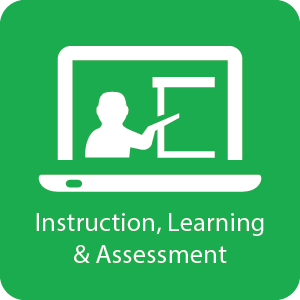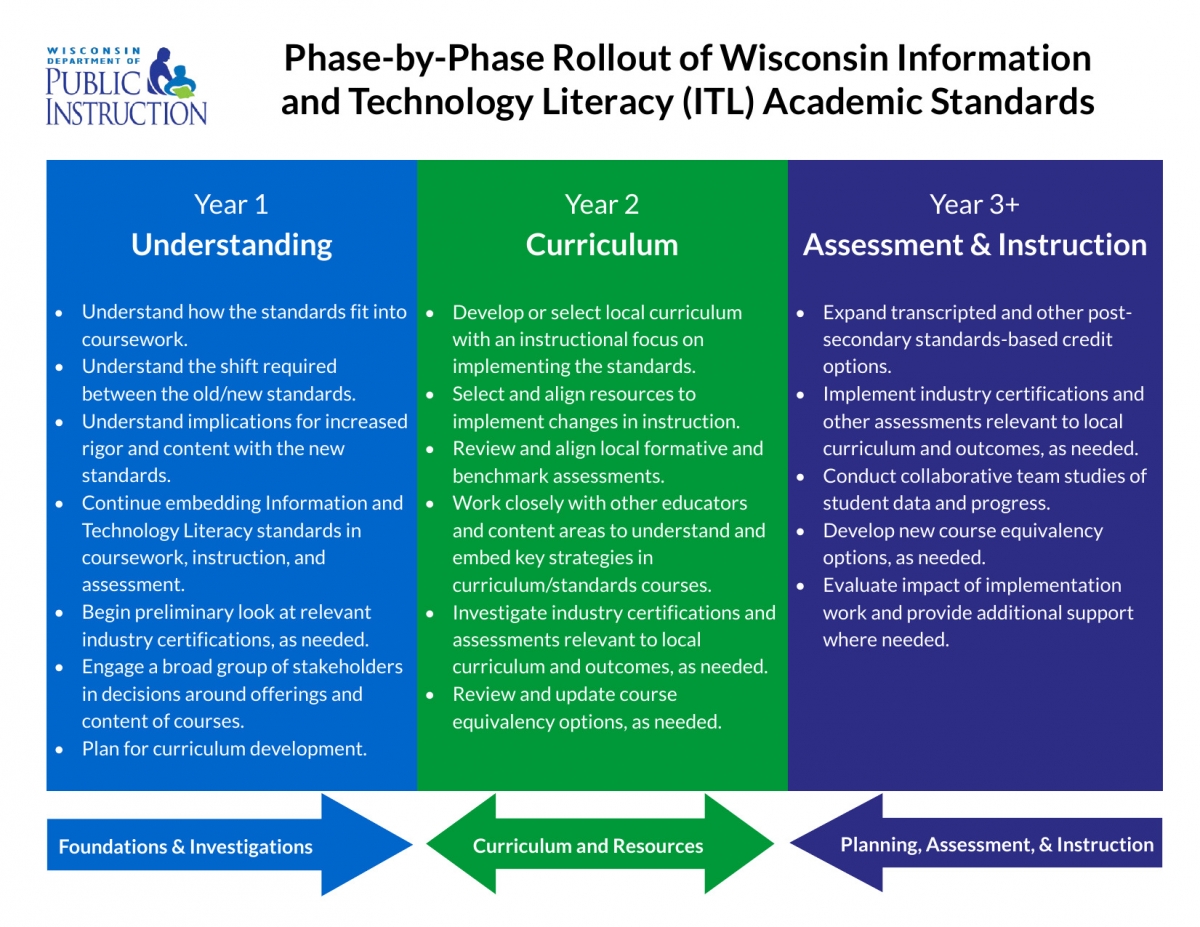Introduction to the Wisconsin Standards for Information and Technology Literacy (ITL)
- Foreword by State Superintendent Dr. Tony Evers
- Introduction to the Wisconsin Standards Information and Technology Literacy (ITL) one-pager
- Wisconsin Standards for Information and Technology Literacy (ITL) (2017) (make a copy to your Google Drive)
- Wisconsin Standards for Information and Technology Literacy booklet WITH cover page
- WI Standards for ITL Google Overview Presentation
What is Information and Technology Literacy Education?
Wisconsin defines Information and Technology Literacy as “the ability of an individual, working independently or with others, to use tools, resources, processes, and systems responsible to access and evaluate information in any medium, and to use that information to solve problems, communicate clearly, make informed decisions, and construct new knowledge, products, or systems.” The Wisconsin Academic standards for Information and Technology Literacy are an important foundation to prepare students to be college and career ready.
A Vision for Information and Technology Literacy
Today’s society is witnessing an unprecedented explosion of information and use of digital resources. In an environment where information is doubling at an incredible rate and digital resources are becoming an increased component of the classroom and the workplace, students face both difficult challenges and increased opportunities. The successful students, workers, and citizens of tomorrow will be self-directed agents of their own learning.
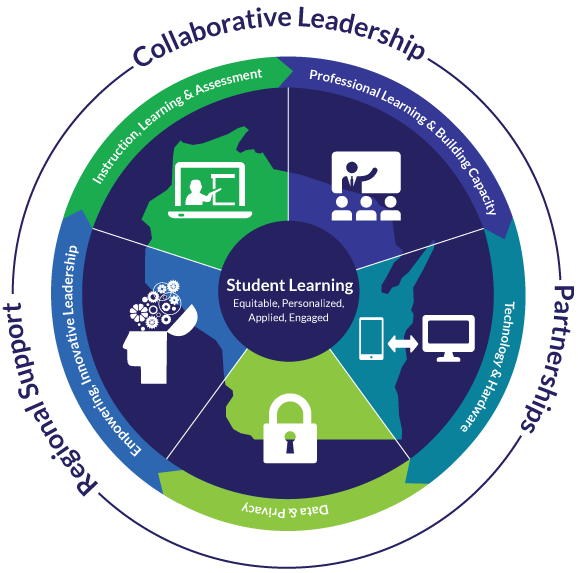 The State Superintendent's Wisconsin Digital Learning Plan (2016) identified updating the current Information and Technology Literacy Standards as a priority for DPI in collaboration with our local school districts and professional partners. The Plan's vision for student learning called for equitable, personalized, applied, and engaged digital learning for all students. The skillful and equitable use of technology can transform the way teaching and learning happen in classrooms across Wisconsin. Digital tools can enhance student learning as they connect efforts to identify what students should know and be able to do as well as help students and educators assess progress toward achieving academic goals. To meet the needs of today's students and to ensure they are college and career ready, schools are encouraged to be innovative in providing student learning experiences, adopting technologies and instruction in ways which meaningfully engage the digital generation.
The State Superintendent's Wisconsin Digital Learning Plan (2016) identified updating the current Information and Technology Literacy Standards as a priority for DPI in collaboration with our local school districts and professional partners. The Plan's vision for student learning called for equitable, personalized, applied, and engaged digital learning for all students. The skillful and equitable use of technology can transform the way teaching and learning happen in classrooms across Wisconsin. Digital tools can enhance student learning as they connect efforts to identify what students should know and be able to do as well as help students and educators assess progress toward achieving academic goals. To meet the needs of today's students and to ensure they are college and career ready, schools are encouraged to be innovative in providing student learning experiences, adopting technologies and instruction in ways which meaningfully engage the digital generation.
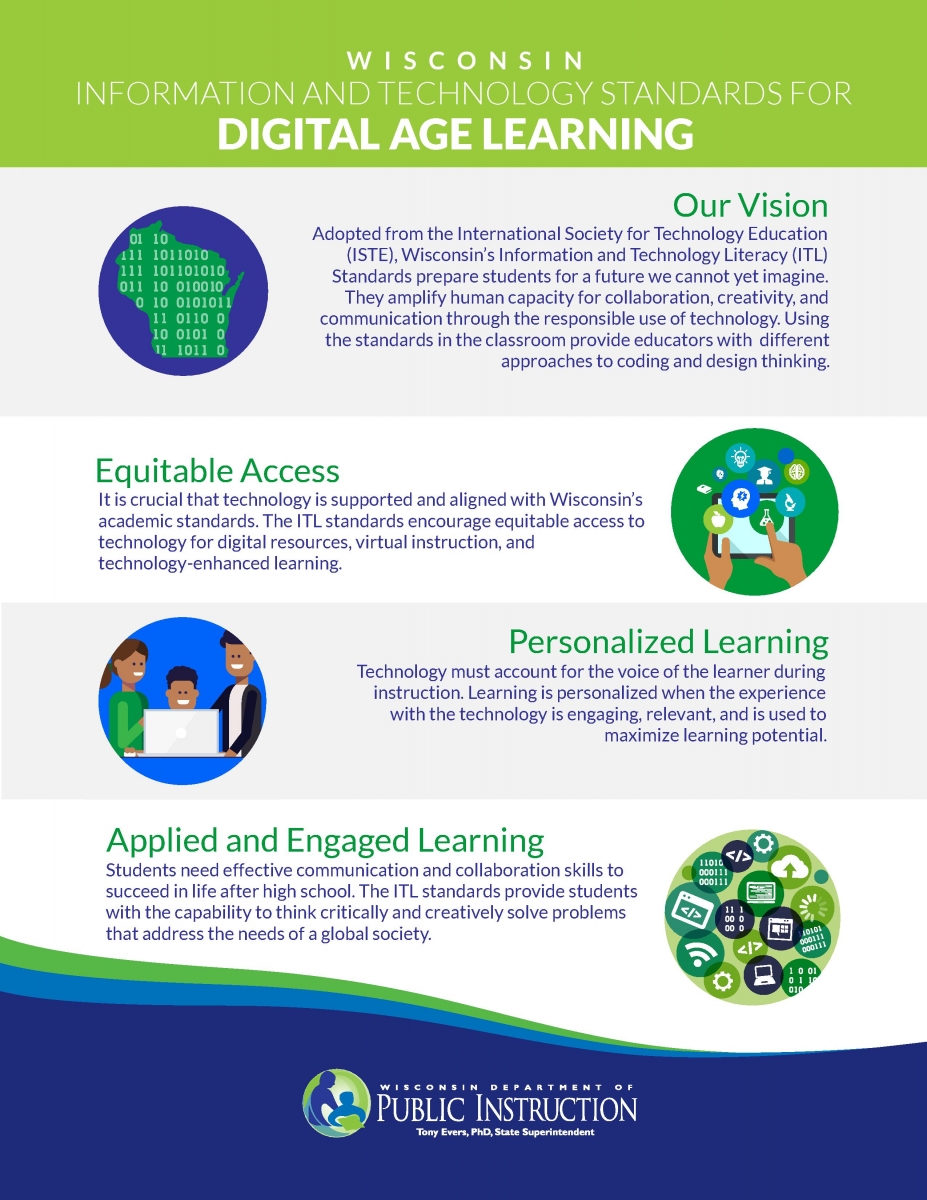
Wisconsin’s Academic Standards for Information and Technology Literacy identifies and defines the knowledge and skills essential for all Wisconsin students to access, evaluate, and use information and technology to engage in and take ownership of their learning. These standards connect and interrelate current perspectives in information literacy, media literacy, and technology literacy into a unified conceptual framework. The standards also demonstrate processes for rethinking education, adapting to a constantly changing technological landscape and preparing students to enter an increasingly global economy.
As educators, we are preparing students for a future that we cannot yet imagine. Empowering students to become lifelong learners and providing them with the skills to face future challenges resourcefully and creatively is critical. Empowering students is not about using digital tools to support outdated education strategies and models: it is about tapping into technology’s potential to amplify human capacity for collaboration, creativity, and communication. The Information and Technology Literacy Standards are about leveling the playing field and providing young people worldwide with equitable access to powerful learning opportunities.
Information and Technology Literacy (ITL) Education in Wisconsin
The purpose of these standards is to identify information and technology content and performance standards for all students throughout the kindergarten through grade twelve (K-12) curriculum. We must ensure that all children have equal access to high-quality education programs. Clear statements about what students must know and be able to do are essential in making sure our schools offer opportunities to get the knowledge and skills necessary for success beyond the classroom. The standards are designed to be integrated into the various content and skill areas of the school curriculum. The focus is on learning with information and technology rather than learning about information and technology. This integration will be varied and diverse based on the curricula of individual schools and school systems. The reflective dialogue will occur in school districts among administrators, curriculum directors, library media specialists, technology coordinators, educators, instructional coaches, parents, students, and community members as each district adopts or modifies these standards and integrates them into the local instructional program for students.
The focus is on a sequential and broad set of information and technology content and performance standards necessary for full development of skills for “learning how to learn” addressed in the core areas of the K-12 curriculum. Some of these ITL standards are included in other academic standards areas, and this inclusion underscores the importance of information and technology literacy standards by providing entry points for integrating them into a variety of curricular areas. Also, elective programs or advanced courses not a part of the curriculum required for all students may require additional or very specific technology skills beyond those listed in these standards.
Finally, accomplishing many of the performance standards listed here will require access to technology by individual students or student workgroups. These standards will be achieved with a strong district commitment to a technological infrastructure including sufficient equipment and access, materials and staffing, appropriate technical support; and a comprehensive, ongoing program of teacher training and staff development.
Wisconsin’s Approach to Standards for Information and Technology Literacy
With the release of the Wisconsin Standards for Information and Technology Literacy, educators have access to the foundational knowledge and skills needed to prepare students to be college and career ready. The learning priorities and performance indicators contained within each set of ITL standards consist of knowledge and skills specific to each of the seven strands. This working definition of Information and Technology Literacy draws upon these seven cross-cutting concepts from the International Society for Technology in Education (ISTE) student learning framework which the working group adapted in addition to Wisconsin-specific learning priorities and performance indicators:
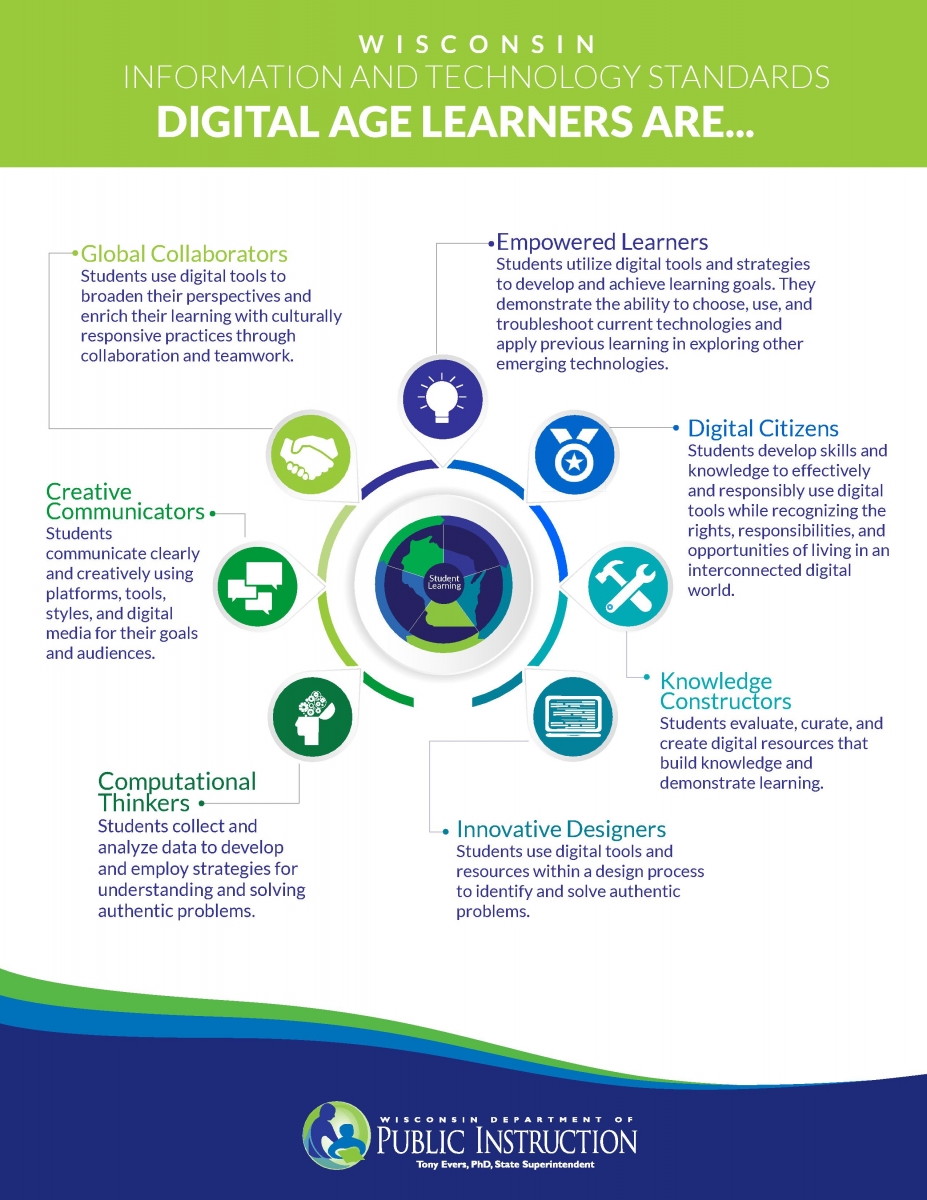
- Empowered Learner (EL)
- Digital Citizen (DC)
- Knowledge Constructor (KC)
- Innovative Designer (ID)
- Computational Thinker (CT)
- Creative Communicator (CC)
- Global Collaborator (GC)
These standards are, of course, critical as the identified skills intersect with all content areas. In addition, there are many knowledge areas, skills, and dispositions common to the pursuit of careers and postsecondary education in many fields. The vision for the new Wisconsin Information and Technology Literacy standards outlines the importance of integrating these standards across all content areas. Students are expected to demonstrate a higher level of application of inquiry, critical thinking, integration of technology tools and appropriate actions when using technology. The ITL standards support a higher level of student agency when leveraging critical thinking skills, collaboration, creativity, and communication. These standards connect and interrelate current perspectives in information literacy, media literacy, and technology literacy into a unified conceptual framework to integrate into other content areas.
As with all the standards, the Wisconsin Standards for Information and Technology Literacy may be taught and integrated into a variety of classes and experiences. Each district, school, and program area should determine the means by which students meet these standards. Through the collaboration of multiple stakeholders, these foundational standards will set the stage for high-quality, successful, contemporary information and technology programming throughout Wisconsin’s K-12 systems.
Implementation Support
The DPI Digital Learning team will be continually updating the resources on this page to support districts in learning about and implementing the ITL standards. DPI is proudly partnering with our Cooperative Education Services Agencies (CESAs) to support district implementation as our goal is to curate additional resources and district exemplars of locally created content to add to the state educator resource repository, WISELearn.
